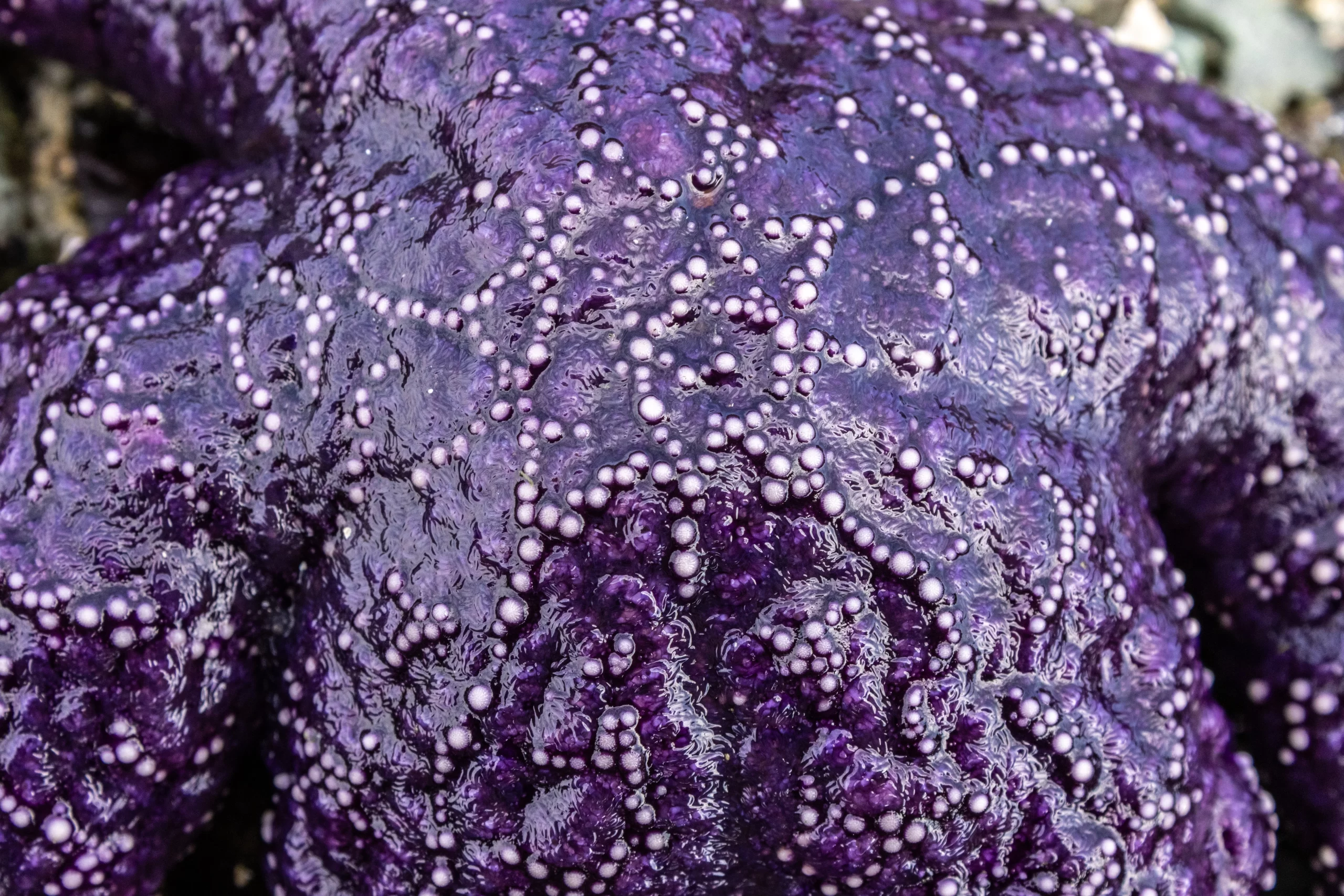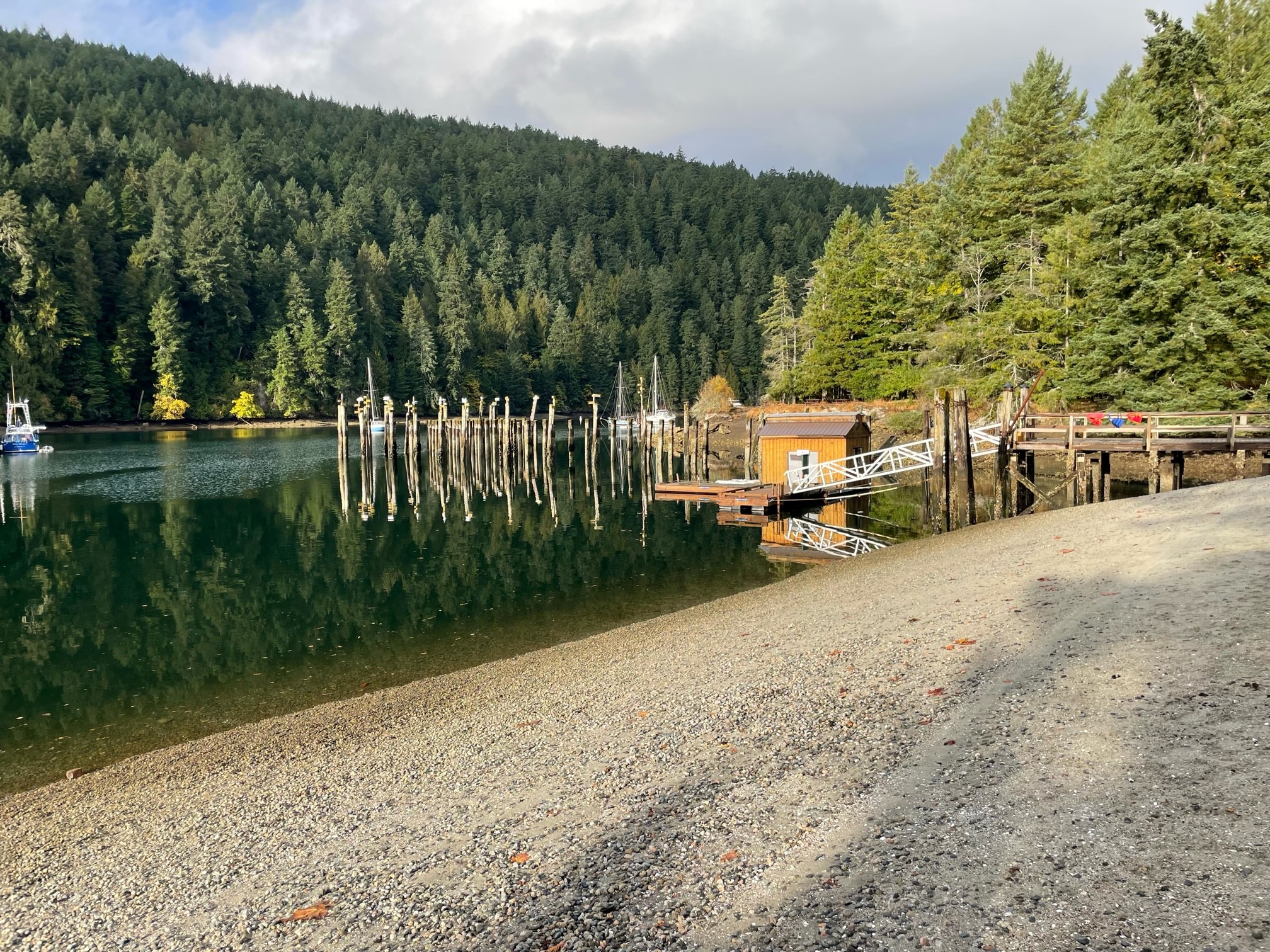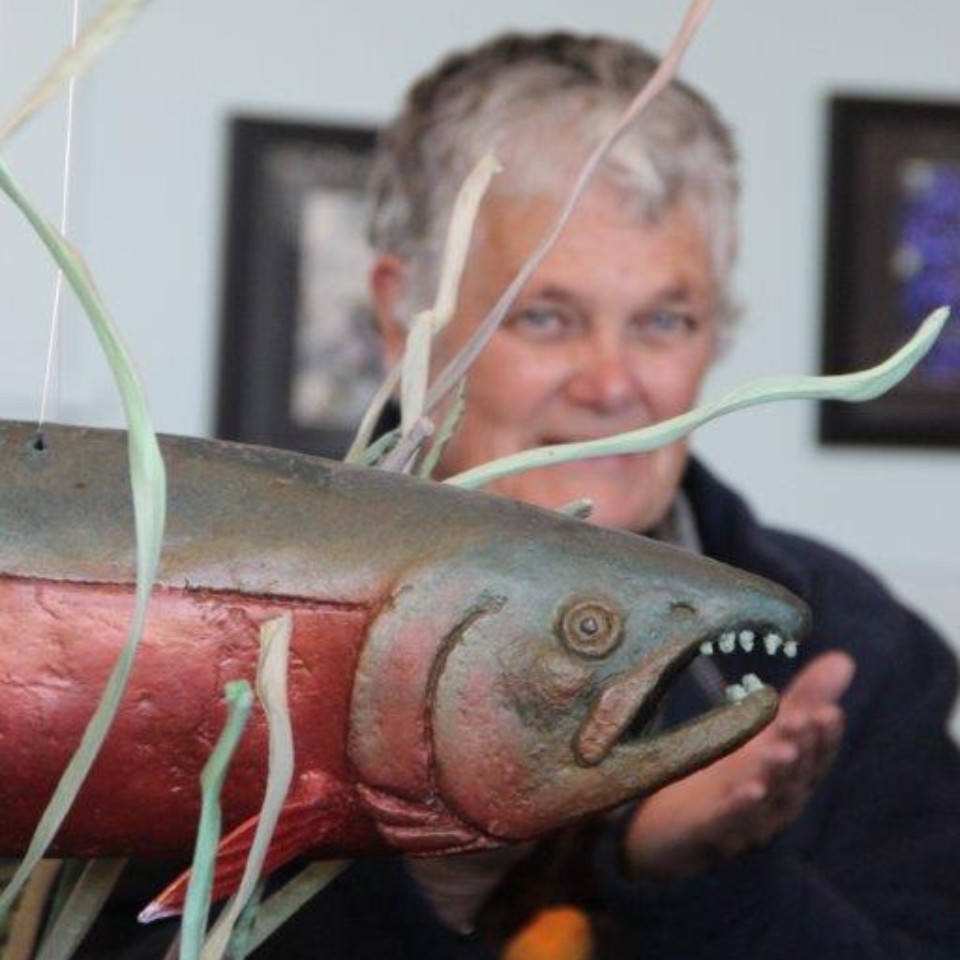Do you want to work a career around the ocean? We want to help! This field is full of opportunities, but it can be challenging to understand where or how to start.
This blog will highlight the Resilient Estuaries of the Salish Sea (RESS) team members. Each team member has had a unique career path before working for SeaChange and as part of the RESS team. There is no one way to get into working around the ocean. There are so many different pathways through education and experience.
Some of the answers in these interviews were used in the “Working with the Ocean” magazine. This magazine also features an academic map spotlighting different university programs in British Columbia, job boards to find ocean jobs, and more! Download the full magazine here:
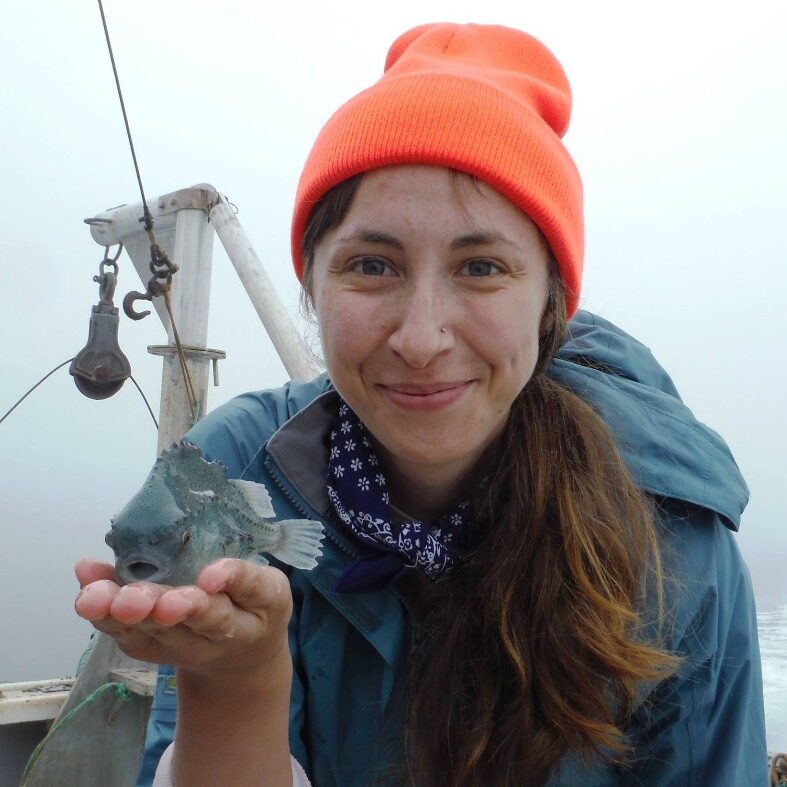
Susan Anthony
RESS Lead Researcher
Susan didn’t start off her academic background in the usual way. After struggling in secondary school, she attended college where she could really learn how to learn. It gave her lots of hands-on experience, and led her to UVic to pursue a Bachelor’s degree. She attended many field classes in Oceanography and Marine Biology, through the Bamfield Marine Sciences Centre. That led her into her Master’s at Bamfield in sea slug ecology and then a PhD in thermal physiology, centred around the effects of climate change. Now Susan works as the lead scientist and project manager of the Resilient Estuaries of the Salish Sea (RESS) Project with.
What does an average day look like for you?
Since a big part of my job is as a project manager, I spend a lot of time behind the computer, making sure all the working pieces are fitting together. But every so often I get to be out in the field, on the boat or giving talks, and being back at the computer to look over the data. Even though I am doing many things, I get to think and talk about the ocean all the time.
What advice do you have for those pursuing a master’s or PhD degree?
Make sure you choose your supervisor wisely; someone you can learn from and who respects what you can offer them. The school itself doesn’t really matter. Don’t be discouraged by rejection; many supervisors would like to take you on, but it may be the wrong time, or they don’t have the funding to support you. Take your time and find the right fit. And while doing your degree, pace yourself, explore your interests, and make connections: most people leaving their degrees don’t carry on with academia, so find your own place in the world.
Any advice for folks who want to work in the field?
If you want to have a job involving the ocean, you don’t have to be a scientist! Follow your passions and build your skills and find how it can help ocean-related work.
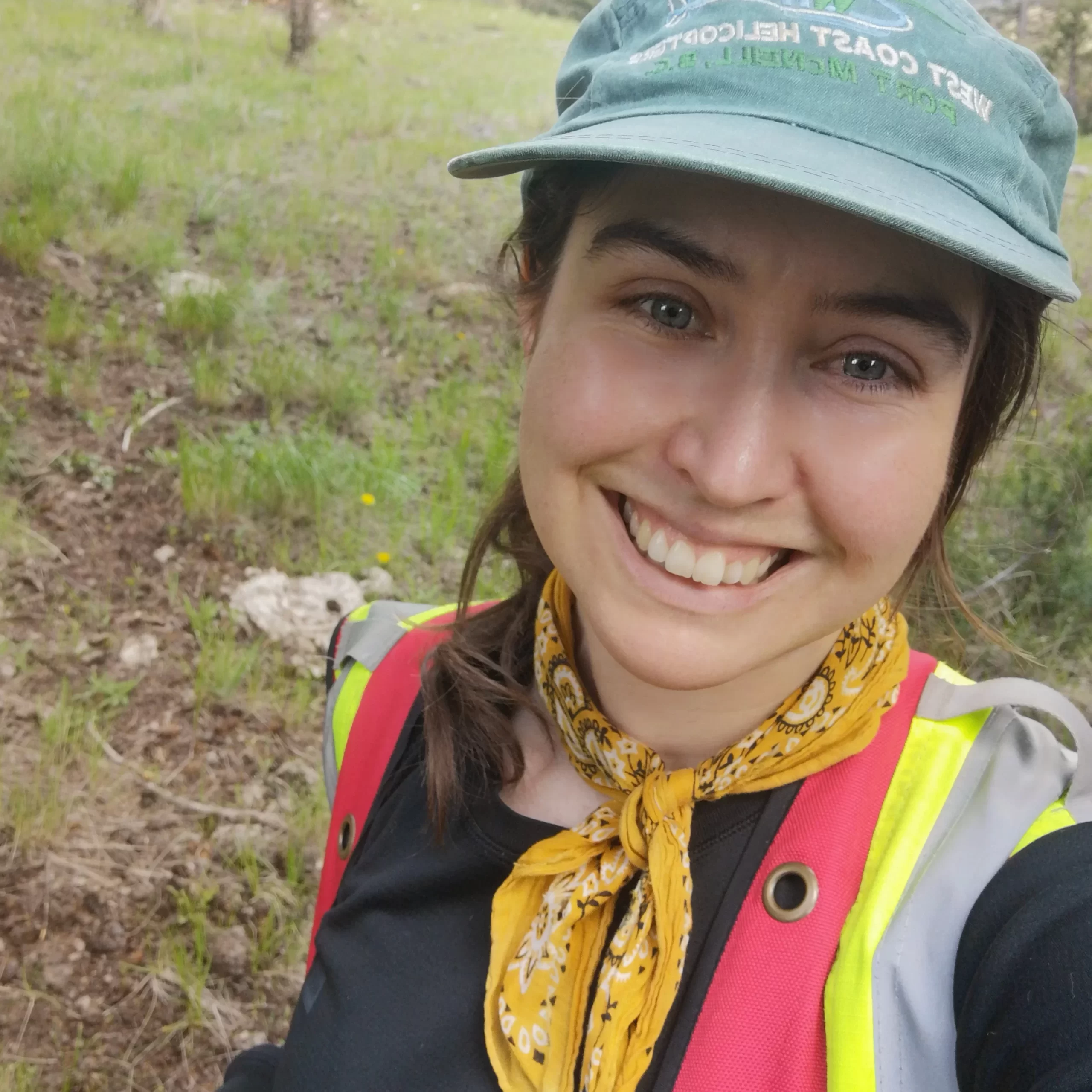
Isabelle Maurice-Hammond
South Salish Sea Coordinator
From the University of British Columbia, University of Toronto, to the University of Victoria, Isabelle has been all over studying anthropology, social justice, and environmental science. She is a PhD candidate of Environmental Studies at the University of Victoria. Her goal has always been to support healing the land and Indigenous sovereignty by working with communities and supporting restoration of traditional food systems.
What led you to work in the marine field?
When I was doing my BA, I did an archaeological and ethnoecological field school through SFU, where I spent a month on the Sunshine Coast in Tla’amin territories, learning from community members and all about coastal archaeology and the ways in which Peoples stewarded their coastal homes and foods. That’s when I first learned about clam gardens, and the magic of the intertidal. Today, I’m not quite in the marine field – my research is more focused on estuaries and tidally-adapted plant foods – but these systems are linked, part of a continuum of practices. And, today, I’m getting to learn a lot more about marine ecologies and restoration through SeaChange, which is really cool!
What does an average day look like for you?
Right now, I’m working part time while I finish my PhD (about 30ish hours a week) and mostly from home, though I also get to do some field work. I tend to start my day off by answering any emails that need my attention. Then, I turn to the projects that I am coordinating. Right now, through our Resilient Estuaries of the Salish Sea (RESS) project, we are focusing on renewing relationships with the Gulf Islands by developing community-led estuarine restoration and conservation projects. Last weekend, we were on Mayne Island, presenting our work to the community and trying to get direction about future projects. Right now, I’m planning some work on Salt Spring, which involves a lot of relationship-building, finding the best ways to connect with and contact peoples, and ensuring that Indigenous Peoples are at the forefront of decision making.
How does an education in anthropology inform your work on the coast?
Doing work on the coast means working on Indigenous territories. To work on, and care for, Indigenous territories means that we have a responsibility to the Indigenous Peoples who have stewarded these territories since time immemorial. My education has given me the tools to be able to see these stewarded landscapes, understanding the deep histories of the lands on which we live and work, and the ways in which we could help renew these stewardship systems. An element in this renewal is the restoration of ecological systems that have been altered through ongoing colonial forms of violence. The most important lessons that I have learnt (and am still learning), however, are that the core of this work is in relationships and being accountable to community. That’s something you don’t learn in school – but you do learn it by showing up when you’re called to help (so, volunteer, whenever you can! Learn and listen!)
Any advice for folks who want to work in the field?
Find ways to volunteer and do some hands-on work, even if it’s not directly marine related – you’ll still learn a lot. There are some many incredible organizations in the Saanich Peninsula that do great restoration while working closely with Nations, like Habitat Restoration Trust. You’ll have a great time while meeting great peoples and building important relationships. I volunteer with them whenever I can.
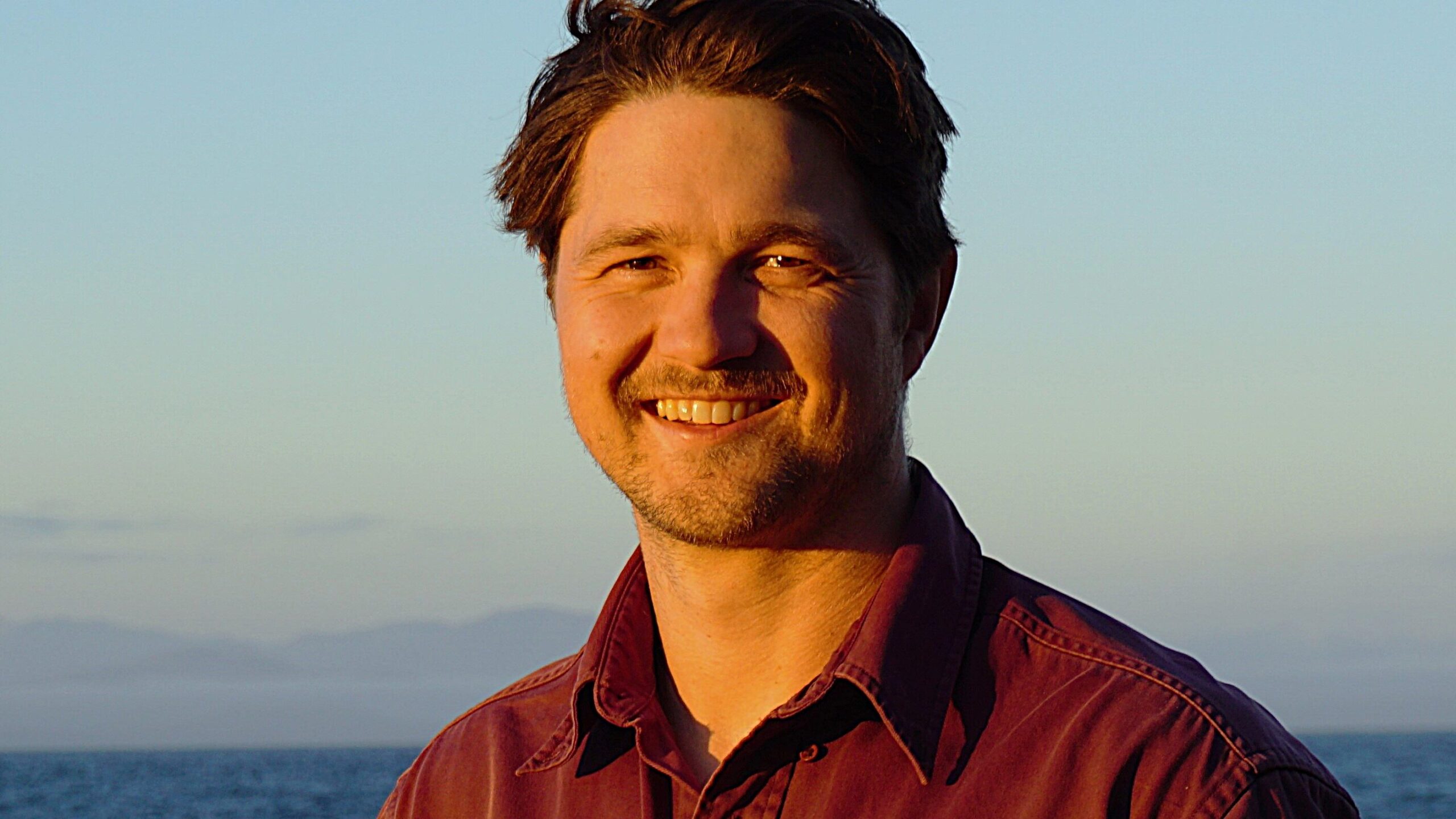
Phil Climie
North Salish Sea Coordinator
Phil started with a BA at the University of Victoria in Business before completing a graduate degree at the University of British Columbia in Community Planning. After graduating, he went to work with various NGO’s and Indigenous communities across the BC coast. Now at SeaChange, he spends his days meeting and working with people to identify conservation opportunities and concerns in Northern Salish Sea estuaries.
What led you to work in the marine field?
My whole life has been spent growing up and recreating around Coastal BC waters, so it became very clear that this world is where I wanted to focus my working hours as well.
How do community partners inform the projects that you work on/what it is like working with communities along the coast?
Community partners are the leaders on projects. SeaChange has resources and expertise to support certain initiatives around estuaries, so good partnerships develop where that supports aligns with community desires.
Any advice for folks who want to work in the marine/coastal/NGO field?
Get involved in local initiatives by volunteering with local conservation groups. You’ll meet people, get outside, and learn more about where your best fit will be. If you’re a student, get free/discounted tickets to conferences.
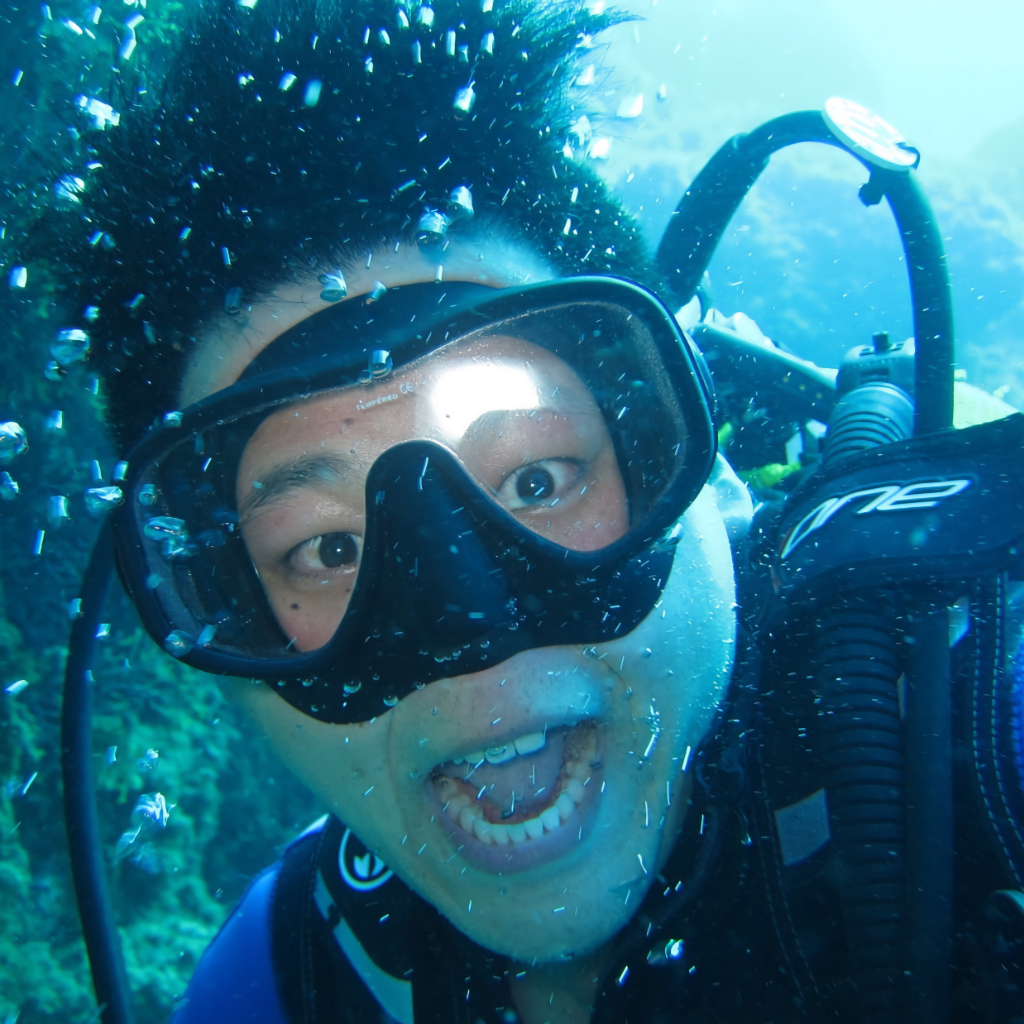
Justin Lisaingo
Operations Manager
Justin received his BSc from Simon Fraser University in 2010, during which he started a 16-year tenure at the Vancouver Aquarium where he worked in different areas of the aquarium, from fish research to BC Marine Animals Care. Now as the Operations Manager at SeaChange, he provides support for field and research staff. On any given day he could be on a boat assisting the dive team, identifying species for biodiversity surveys, orchestrating marine debris removals, writing safety protocols, or maintaining and improving the boats.
Explain your academic/career background (how you got to where you are)
I received my Bachelor of Science degree from Simon Fraser University in 2010, including a valuable semester at the Bamfield Marine Sciences Centre being fully immersed in the academic marine field. During my second year at SFU, I began a 16-year tenure at the Vancouver Aquarium. I started in the Fish Research department, where I was mentored by some of the most trusted authorities in marine sciences on our coast. Eventually I moved into the BC Waters animal care department – still with the Vancouver Aquarium – where I had a chance to apply what I had learned about the Pacific Northwest’s marine ecology and biodiversity towards creating realistic representations of diverse marine habitats.
What led you to work in the marine field?
I did not grow up with an innate appreciation of nature, but I have always been highly food motivated. Like most people, I didn’t think much about where my food came from, beyond the grocery store. Whether I am enjoying a coffee shipped 13,400km from a fairtrade farm in Ethiopia, or lingcod taken with my own hands, there is always an economic, environmental, and social impact. While marine biology is arguably the most delicious of the sciences, it also affords opportunity to collaborate and connect with local knowledge keepers whose expertise and traditional knowledge is invaluable to maintaining a sustainable and culturally informed coexistence of humans in a natural world. My favourite foods rely on properly functioning natural environments, so I find the work of supporting marine environments highly gratifying.
What does an average day look like for you?
I don’t think I have had an average workday in many years! As Operations Manager with SeaChange, my role varies on any given day based on what projects are ongoing and what support our field and research staff require. On Monday I might be on the boat with our dive team helping with water quality data collection and identifying species to establish baseline biodiversity data in Oak Bay; Tuesday, I might be onshore to organize a dumpster and excavator to support our field team to remove plastics, ropes, car batteries, and crab traps during a marine debris removal operation around Mayne Island; Wednesday, I might be writing safety protocols to keep our field crews safe; And Thursday I might be maintaining or improving the our two boats, the Collective Effort (a 27′ pontoon vessel with a small hydraulic crane that we mainly use for marine debris), and the Sarah V (a smaller, new-to-us vessel that is named after one of SeaChange’s co-founders, and is mainly used for data collection).
What did you learn working at the aquarium/what is advice you have for those wanting to work at marine facilities?
Through my tenure at the Vancouver Aquarium, I developed a practical and versatile skill set, including scuba diving, boating, asset management, field operation logistics, and risk mitigation – skills that are readily applicable to a wide range of professional roles – but the most valuable gift I received, was mentorship from numerous passionate, experienced leaders in their respective fields. Opportunity is a privilege, and not everyone assumes they can ask for it. Talk to the people that inspire you. They want to hear from you! Try new things and be open to opportunities that present themselves, but remember to ask yourself why you’re doing what you’re doing, and if you are leaving the place a little better than how you found it.
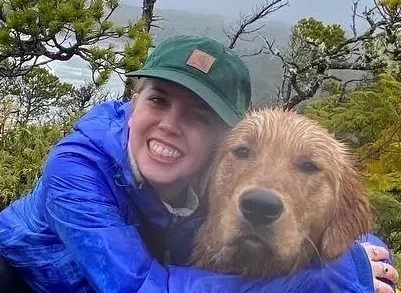
Seannie Malcolm
GIS Lead
Seanie graduted from the University of Victoria in 2019 with a BSc in Geography, focusing mainly on physical and marine geography. She then spent 3 years as Head Naturalist on a whale watching boat, where she further developed her passion for conservation. In 2022, Seanie joined the ShoreZone team as a polygon mapper and is now the GIS Lead at SeaChange.
What led you to work in the marine field?
I’ve always known I wanted to work in the marine field. Growing up on the West Coast gave me a deep love and respect for coastal ecosystems. The ocean has always felt like home, and it’s had a lasting influence on both my personal life and career path.
What does an average day look like for you?
I’m lucky to have a lot of variety in my work. For a large part of the year, my days are desk-based—mapping shorelines, processing imagery, maintaining datasets, and creating maps. In the warmer months, field season kicks off. I’ve taken part in aerial imaging surveys in Barkley Sound, Haida Gwaii, Northern BC, Cape Breton, and the Bay of Fundy. I’ve also worked on tow camera surveys in local estuaries around Greater Victoria and the Southern Gulf Islands. Every season looks a little different, and I’m always looking forward to whatever the next one brings.
Any advice for folks who want to work in the marine/coastal/environmental mapping field?
It can be a competitive field, so don’t get discouraged if it takes more applications than expected to land that first job. Take advantage of co-ops, field schools, and any hands-on experience you can get while in school. Volunteering at restoration events is also a great way to network and learn. Be open to opportunities that might not look exactly like your dream job—they can lead you somewhere unexpected. Most importantly, stay passionate and curious!
How does mapping help coastal and marine conservation?
The ability to visualize data through mapping is incredibly powerful. GIS and mapping tools help collect, analyze, and interpret spatial data, making it easier to understand changes over time and space. They support informed decision-making, guide resource management, and help communicate complex information to both scientific and public audiences. Mapping bridges the gap between data and action, making it an essential tool in marine and coastal conservation. The possibilities are nearly limitless when it comes to how maps can support and strengthen conservation efforts.

Jamie Smith
Dive Team Lead & Underwater Photographer
Jamie studied professional photography in college, but his passion for the ocean led him to pursue commercial diving. He wanted to combine both interests—working with cameras and being underwater. Over time, Jamie expanded his skills by earning certifications in marine operations and commercial diving. By bringing all these experiences together, he has built a career as a mariner, commercial diver, and photographer/filmmaker, often working on conservation-focused projects.
What led you to work in the marine field?
Growing up, I spent countless hours around lakes, rivers, and the ocean. That early connection developed into a lifelong passion. Working as a professional photographer, mariner, and commercial diver allows me to stay close to the water and contribute to protecting the environment I care deeply about. Nature and the ocean have always inspired me.
What does an average day look like for you?
A typical day involves spending 6 to 8 hours on the water aboard my boat. Depending on the project, I might be diving for eelgrass transplant work, conducting marine surveys, or operating underwater camera systems to film marine life and habitats. Every day is different, but it’s always hands-on and deeply connected to the ocean.
Any advice for folks who want to work in the field?
If you’re passionate and committed, you can absolutely make it happen. Stay curious, keep learning, and don’t be afraid to start small. Experience in the field builds over time, and every step counts.
How can someone work as a diver/what is the best way to get into career diving?
The first step is to get your recreational diving certification. If you discover a love for the underwater world, you can take it further by training to become a commercial diver. There are a few reputable schools in BC that offer the training needed to begin a career in commercial diving and underwater work.
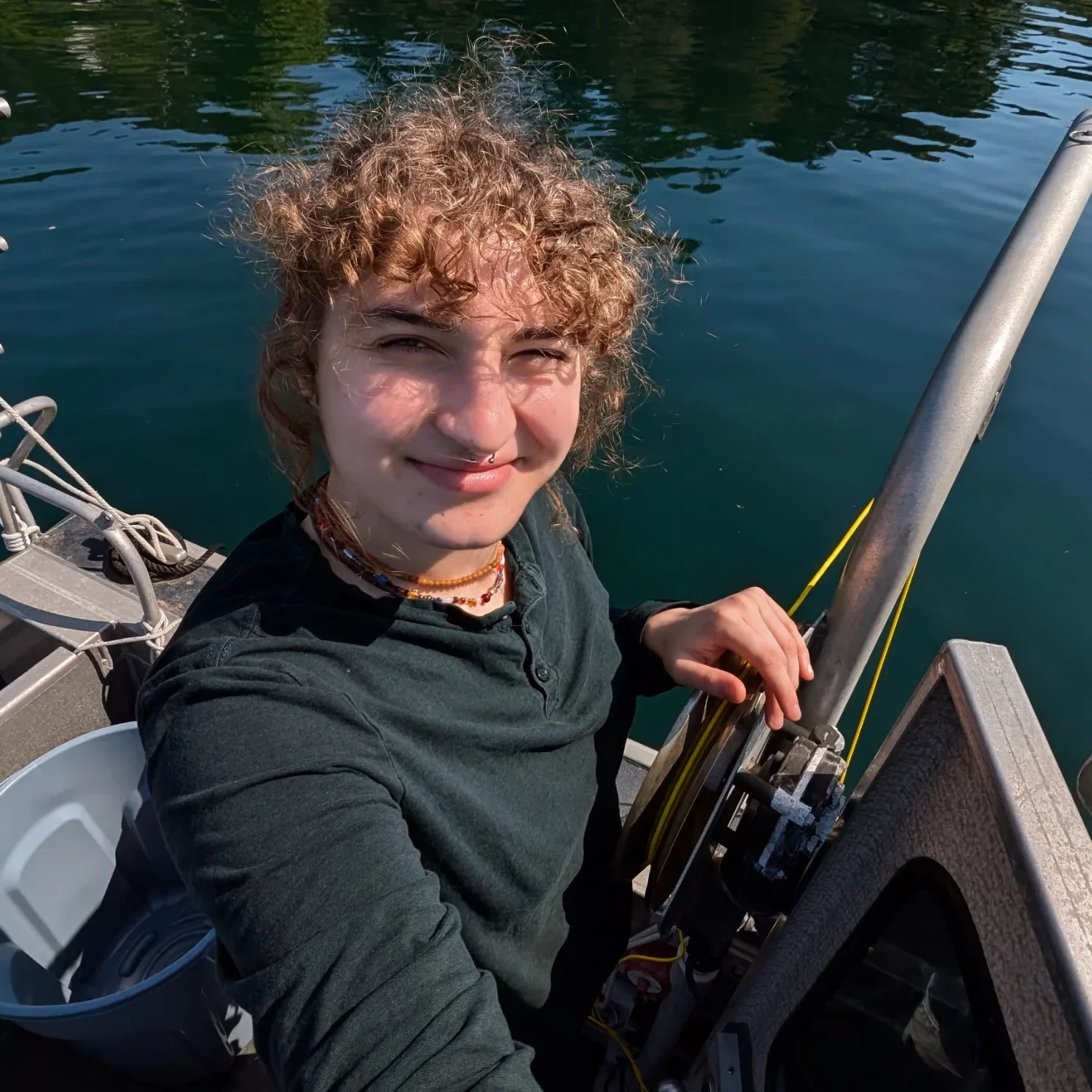
Elle Schroeder
Research Assistant
Elle is a third-year Geography student at UVic in the BSc stream. She has always been interested in taking an environment-based degree and at UVic has begun focusing on coastal and marine mapping using satellite imagery. Working as a research assistant and mapping technician for the RESS project at SeaChange has been her second and third co-op terms. This role has allowed her to grow her skills and love for working with the ocean and helped her to choose her direction for post-grad studies and work.
What led you to work in the marine field?
I grew up in Southern Ontario, so my exposure to the ocean was limited, and came in the form of visiting family on Vancouver Island. Since then, I have been captivated by the ecosystems and formations that this coast displays so beautifully. I have also always been interested by the natural sciences, and figured to study coastal geography, this was the place to be.
What does an average day look like for you?
There’s always a lot of variety! I could be working from home or out in the field on any given day. Generally, I do a lot of habitat mapping, researching for our estuaries, sampling, and more! Through helping other members of the RESS team I have been able to learn a ton of new skills in this co-op.
How can you break into the field while in undergrad?
I would highly recommend taking part in a co-op or internship program! It has been an incredible opportunity for me to gain relevant job experience (and networking!) as an undergrad student. A lot of people have a fear of graduating with no idea what to expect in your field, I know I did. So far co-op has been a great way to try out jobs in geography without competition from those outside of UVic. Plus, you never know what you really like to do until you try it, so I highly suggest it for any degree!
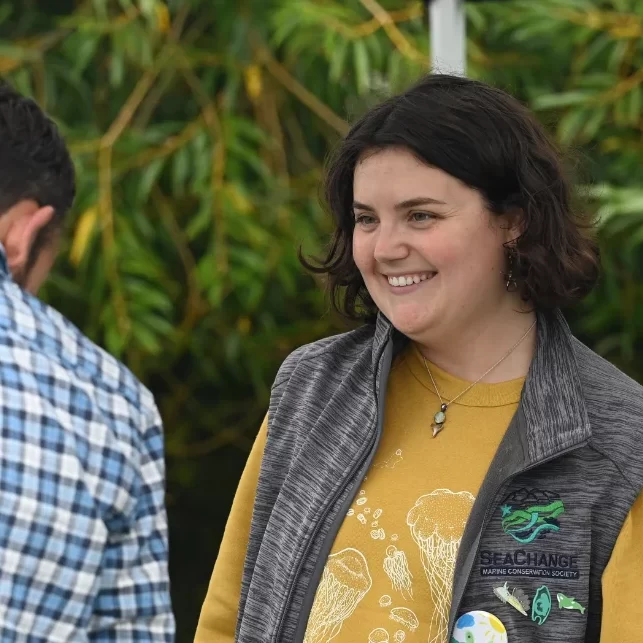
Kendra Nelson
Communications Manager
Kendra graduated from BYU Hawai’i with a BSc in Biology. During university, she worked as a lab assistant, teaching assistant, and on a variety of projects involving coral conservation, reef fishes, and sharks. Ocean conservation became her passion as she organized beach cleanups and other events to promote stewardship. She decided to not pursue research and lean into communication as a content creator and for nonprofits.
What led you to work in the marine field?
I grew up in Texas and Arizona, but fell in love with marine life at aquariums and trips to the coast. I was particularly enamoured with killer whales. Eventually I went to university to study marine biology with a goal to eventually end up in the Salish Sea to work with the endangered Southern Resident population. On the way I worked as a lab assistant and teaching assistant in university for marine biology, animal behaviour, genetics, and invertebrate zoology courses. All of this made me fall in love with more niche marine species, ecosystems, and conservation work as a whole.
How did you get into communications?
It happened organically! While in university, I was startled by the amount of marine debris I saw on the shoreline. I started to make posts about it on social media. I dove into studies on marine debris and started organizing beach cleanups for a local organization and the marine science club that I was the president of. Over the years, I continued to write about recent research and policy issues for social media and blogs. When I graduated and moved to British Columbia, I got a job as the social media coordinator for nonprofit and fully decided then that I wanted to work in communications for environmental organizations.
What does a typical day look like for you?
I’m not sure that I have a typical day. Some days I am spending 7+ hours designing materials (like this pamphlet/blog). Some days I am coordinating event details, emailing, or in meetings. Sometimes I get to go to conferences, workshops, or symposiums. The majority of my work is done at my desk, but I do get out on occasion for field work or events. Currently I am working a project to learn more about an introduced species of algae in the Salish Sea, so I am getting the opportuntiy to get back into some of my science/research background!
Is a Bachelor of Science necessary to work in the marine field?
This depends on what your goals are! I know lots of folks in the field who don’t have a scientific background but work out in the field, assist with research, and fill in other roles like in communications or management. I got my degree in biology because I wanted to work on research but that didn’t end up panning out how I had planned… luckily I also loved working with scientists and organizations to communicate their work with the public!

